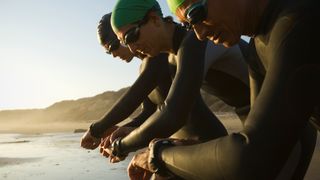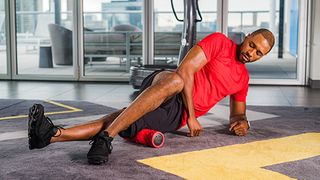An Ironman Triathlon is one of the most physically demanding sporting events in the world. Comprised of a 2.4-mile swim, a 112-mile bicycle ride and a 26.22-mile run, it takes serious dedication and training to accomplish in full. It is, however, far from being an impossible task to do, especially if you follow the below Ironman triathlon tips.
“Training for an Ironman Triathlon is only as daunting as you make it for yourself", Ruth Stone, consultant PT for www.sweatband.com, commented, "Breaking down every step of the journey, from preparation to training to the day itself, will make each task much easier to tackle one at a time. This guide can help anyone get ready for an Ironman Triathlon, regardless of if they’ve never run, cycled, or swam in an athletic setting or have experience with triathlons before.”
Dust off your triathlon bike and strap on your triathlon watch, it's time to get ready for your first triathlon!
1. Plan, plan and plan some more
"There’s no such thing as too much preparation when it comes to planning your first Ironman Triathlon", suggests Ruth, "Pick a race that presents a suitable challenge for your current ability but is also in line with your ambitions for where you want to get to with your fitness."
Picking a race might seem like a minor detail, but it really isn’t; you’ll need to consider the course, the terrain, the weather and, of course, the gear you’ll need.
"You’ll also need to consider if you’ll need to travel abroad for the race, as most triathlon bikes aren’t built to be put in the overhead compartment on a plane", she adds, "the more planning you do before starting your physical training, the easier the entire process will be."

2. Focus on your journey (with a little help from your friends)
It can be super easy to get sucked into comparing yourself to others, particularly in the age of social media. This is, of course, not the right thing to do.
Ruth says you can and should only focus on your own training, progress and journey when getting ready for an Ironman Triathlon: "While there is absolutely nothing wrong with using other people’s training plans as an inspiration to further optimise your own, you shouldn’t throw your entire training plan out of the window based on what you’ve seen on someone else’s social media."
"That said, social media is a fantastic platform to connect with fellow competitors and share experiences of the events, training, and equipment tips to help you prepare", she adds, "There are lots of informal groups and being part of one or more will help educate and motivate you.
3. Take your training to the next level with the best equipment
"Whether it’s a new exercise bike or a treadmill, there are plenty of ways to take your training to the next level with the best equipment", Ruth says, "Of course, the best equipment doesn’t always have to be the most expensive; it depends on your training plan and personal needs."
There are excellent cheap treadmills to chose from, not to mention folding exercise bikes that are less expensive than their full-sized counterparts.
Better still, you can continue to use these machines for general fitness after the Ironman Triathlon, assuming that you don’t plan on flopping down on the sofa for the rest of the time after that 2.4-mile swim, a 112-mile bicycle ride and a 26.22-mile run!

4. Include strength, stretch, rest and recovery in your training plan
"A well-rounded training plan will include strength, stretch, and rest", Ruth adds, "It’s very easy to think you only need to undertake the three sports in the event to excel at them."
"However, performance improves and injuries result less if complementary strength training is built into your programme, a good stretch element is maintained and rest days are included too."
5. Optimise your diet
If you train a lot, you’re going to be hungry a lot! It’s not quite as easy as eating an entire multi-pack of crisps in one sitting or ordering an extra-large pizza with extra toppings for dinner, though.
Food is, quite literally, your body’s fuel, after all.
"It’s super important to eat a healthy meal or snack after working out, as the 30-to-45 minutes after an intense workout are when your body gets to work repairing your muscles", Ruth recommends, "Meals and foods high in carbohydrates are great to include in your diet while training, as carbohydrates are fast-acting and turn into energy as soon as they’re digested."



